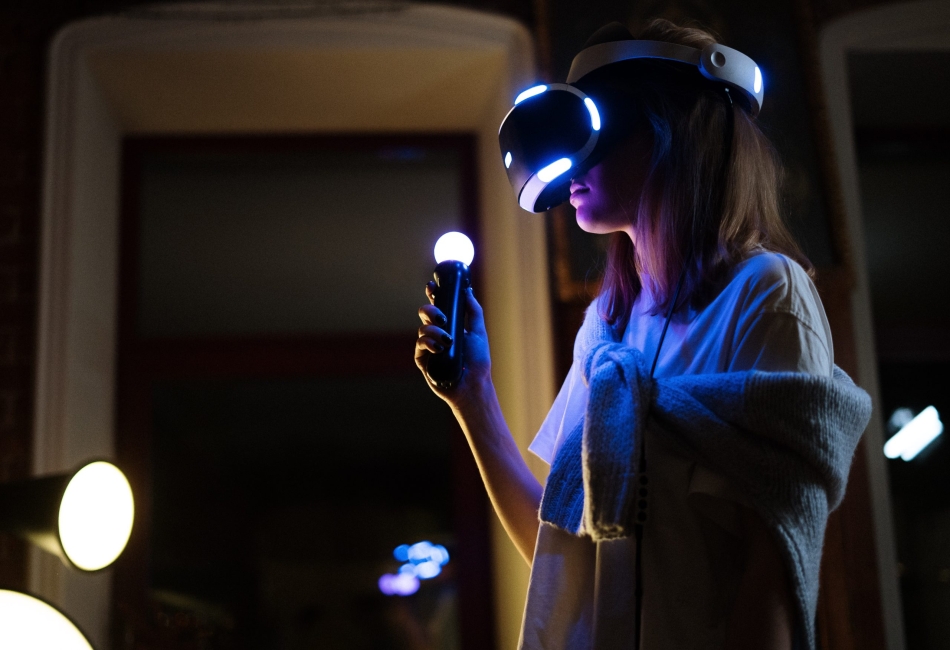The moment you slip on a VR headset and hear footsteps approaching from behind, your body instinctively tenses and turns, even though your rational mind knows you’re standing safely in your living room. This primal response reveals the extraordinary power of spatial audio in virtual reality—a technology that hijacks millions of years of evolutionary programming to convince your brain that digital worlds are as real and present as the physical space around you.
Unlike traditional stereo or even surround sound systems that place audio sources at fixed positions relative to speakers, VR spatial audio creates a three-dimensional acoustic environment that moves and responds with your head movements in real-time. When you turn left in a virtual forest, the chirping birds that were on your right smoothly transition to being behind you, while new sounds emerge from your new forward direction. This constant recalculation of audio positioning creates an unbroken illusion that you exist within the virtual environment rather than merely observing it from outside.
The technical foundation of VR spatial audio rests on something called Head-Related Transfer Functions, or HRTFs—mathematical models that describe how sound waves interact with the unique geometry of human heads, ears, and torsos before reaching our eardrums. Every person’s HRTF is as individual as their fingerprint, shaped by the precise dimensions of their skull, the size and angle of their ears, and even the width of their shoulders. VR systems must either use generalized HRTF models that work reasonably well for most people, or ideally, create personalized audio profiles that account for each user’s unique acoustic signature.
The psychological impact of accurate spatial audio in VR extends far beyond simple directional awareness. When sound positioning aligns perfectly with visual cues, it creates what researchers call “presence”—the subjective feeling of actually being inside the virtual world. This sense of presence is so powerful that users often report feeling genuine emotional responses to virtual environments: claustrophobia in tight spaces, vertigo at great heights, or social anxiety when virtual characters stand too close. The audio system becomes a direct pathway to the limbic brain, bypassing conscious skepticism and triggering authentic emotional and physical responses.
Distance modeling represents another crucial aspect of spatial audio implementation. In reality, sounds don’t just get quieter as they move farther away—they also lose high-frequency content, develop different reverb characteristics, and interact with environmental obstacles in complex ways. A voice calling from across a canyon doesn’t simply sound like a nearby voice played at lower volume; it carries the acoustic signature of vast space, wind interference, and multiple echo reflections. VR systems must simulate these distance-dependent changes to maintain the illusion of realistic space.
Environmental acoustics add layers of complexity that separate amateur VR experiences from professional productions. The same footstep should sound entirely different when taken on marble floors versus thick carpet, in a cathedral versus a small bathroom, or outdoors versus indoors. Modern VR audio engines calculate these environmental interactions in real-time, considering factors like surface materials, room geometry, and atmospheric conditions. Developers often spend considerable resources acquiring high-quality sound downloads from specialized libraries to ensure their environmental audio maintains professional standards and acoustic authenticity.
The challenge of processing lag presents a constant technical hurdle for VR spatial audio systems. Human hearing is extraordinarily sensitive to timing discrepancies—delays as short as 20 milliseconds between head movement and corresponding audio changes can shatter the illusion of presence and cause motion sickness. This means VR systems must predict, calculate, and deliver spatially accurate audio faster than human perception can detect any lag, requiring specialized hardware and optimized software algorithms.
Binaural audio recording techniques have emerged as powerful tools for creating ultra-realistic VR soundscapes. These recordings use specialized microphones placed inside artificial human ears, capturing audio exactly as human ears would receive it in real environments. When played back through VR headphones, binaural recordings can create startlingly convincing spatial experiences—users often report feeling like they’re actually standing in the original recording location, complete with accurate distance perception and environmental characteristics.
The therapeutic applications of VR spatial audio have opened entirely new fields of treatment and training. Medical professionals use spatially accurate audio environments to help patients overcome phobias, with the realistic sound design creating controlled exposure experiences that feel authentic enough to trigger therapeutic responses. Military and emergency response training programs rely on precise audio cues to simulate dangerous situations where spatial awareness can mean the difference between life and death.
Looking toward the future, advances in real-time audio processing and machine learning promise even more sophisticated spatial audio experiences. Emerging technologies may soon enable VR systems to analyze users’ individual hearing characteristics and automatically optimize spatial audio for their unique physiological requirements, creating perfectly personalized acoustic experiences that feel more real than reality itself.
The ultimate goal of VR spatial audio isn’t just to create convincing virtual worlds—it’s to fundamentally expand human experience, allowing us to visit impossible places, train for dangerous situations, and connect with others across vast distances through shared acoustic environments that feel absolutely, undeniably real.
